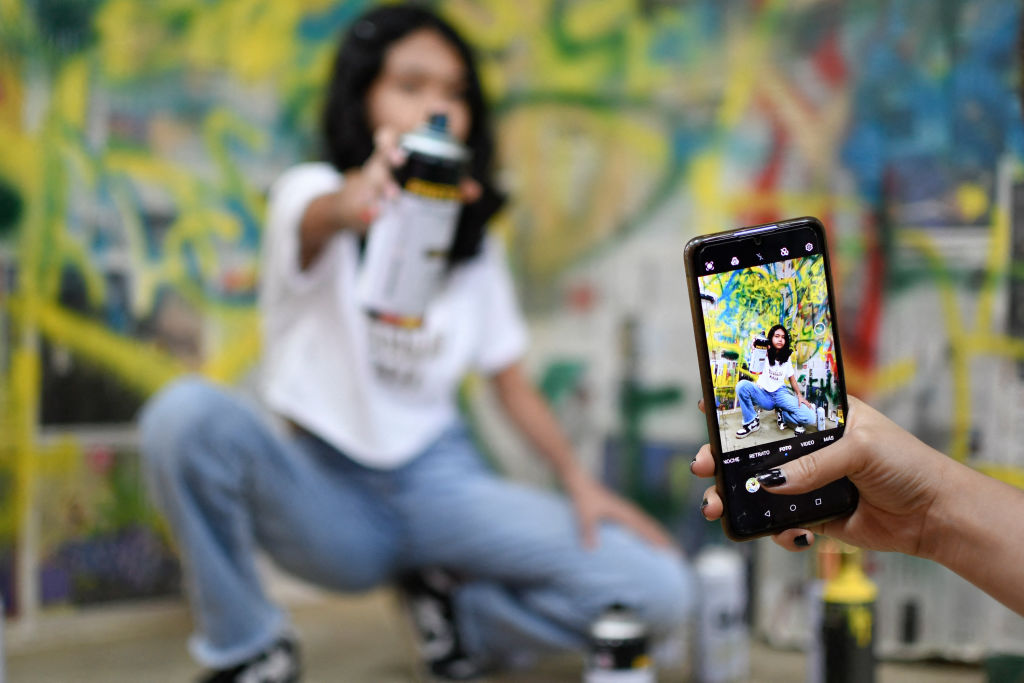
Instagram has been criticized in recent weeks for prioritizing short videos—known as Reels on the platform—over photos in a perceived effort to replicate the success of its rival TikTok.
Prominent celebrities and influencers like Kim Kardashian and her sister Kylie Jenner have been vocal about their dislike of the change. Jenner re-shared a post calling to “Make Instagram Instagram Again” that added “I just want to see cute photos of my friends.” This led Instagram’s CEO Adam Mosseri to respond to the criticism in a post where he revealed that “more and more of Instagram is going to become video over time,” marking a serious shift away from the photo-sharing app’s original purpose.
Read more: A Brief History of Instagram’s Fateful First Day
But while Mosseri says that this is partially due to the rapid influx of videos posted on Instagram, Ryan Kemp, freelance photographer and owner of @theworldisananalog on Instagram, says the switch has been pushed on users.
“When [Reels] started, Instagram started pushing like ‘oh, you can make up to $1,000 a month if you do reels’ for bigger accounts like myself,” Kemp tells TIME. With more than 20,000 Instagram followers, Kemp tried to implement Reels, but it began to feel ingenuine.
More from TIME
“I think it’s just important for anyone to create and share the work they love, even if you didn’t share it publicly,” he says. “I think that’s what’s getting lost in the mix of this. People just want all the likes, followers and money and that kind of puts a damper on things. It misses the point.”
Here are some alternatives to Instagram that you can use if you miss the old user experience on Instagram.
Glass
Launched just last August, Glass markets itself as a photo-sharing app that’s not for comparison, but community. Co-founders Tom Watson and Stefan Borsje say that they hoped to make an app that wasn’t charged by addictive algorithms or that collected personal data. This inspired their “appreciate” feature that functions similar to a “like” button, but is ascribed as more intentional and slower. The app was programmed to allow users to turn off “appreciations” and have no record of the number of “appreciations” on a post, similar to Instagram’s feature that allows users to hide a post’s like count.
Glass also claims users have much more control over the content they consume, with a dedicated chronological feed of the photography posted by those you follow.
Users can also use the app in full screen mode to zoom in to the details of a photo. Unlike Instagram, users must pay to use this app. Glass costs a $4.99 monthly fee or $29.99 annually for use, after an initial 2-week free trial.
Grainery
The ideal app for film photographers, Grainery looks aesthetically similar to Instagram in its initial setup. However, this app asks users to add the type of camera, lens, or film stock they use before they’re able to post, in an effort to build an index of photos users can get inspiration from.
There is a free version and a $3 monthly membership option. Subscriptions give access to unlimited posts, profile updates, and enter users into a monthly raffle for a free roll of film.
Tumblr
Once valued at more than a billion dollars during its peak growth in 2013, Tumblr was one of the few online places for users to share images before Instagram took off. Now a social media platform catering to unique internet subcultures, such as fans of shows, books, and television programs, Tumblr has retained its original social blogging features rather than attempting to mimic its competitors.
Unlike other social media apps, Tumblr is not littered with advertising content or influencers. It’s a much more functional platform, where users can easily find content they like based on their niche. And despite reports of the brand falling off in recent years—valued at just $3 million in 2019—Tumblr appears to be becoming popular with users again, says Kemp, who has had a Tumblr account for years. “A lot of people are going back to Tumblr… So maybe eventually I’ll do that.”
BeReal
Distinct from Instagram in that users can only post one photo a day, BeReal marks a push towards giving users a chance to present a more authentic version of themselves, in stark contrast to the highly curated Instagram profiles we’re used to seeing. Popular among Gen Z, BeReal sporadically sends an alert to its users, with a suggested two-minute time frame to post a photo. Users engage with their friend’s posts through reaction selfies instead of likes, and can only view posts if they upload a photo first.
Read more: BeReal Won’t Save Us From Social Media—Yet
The lack of edits and filters available through the app is enticing to many. “With BeReal you don’t feel the pressure to participate in some form of performative action,” says Filipa Costa, a 22-year-old Boston University graduate. “It’s all about being in the moment.”
More Must-Reads from TIME
- Inside Elon Musk’s War on Washington
- Meet the 2025 Women of the Year
- The Harsh Truth About Disability Inclusion
- Why Do More Young Adults Have Cancer?
- Colman Domingo Leads With Radical Love
- How to Get Better at Doing Things Alone
- Cecily Strong on Goober the Clown
- Column: The Rise of America’s Broligarchy
Contact us at letters@time.com